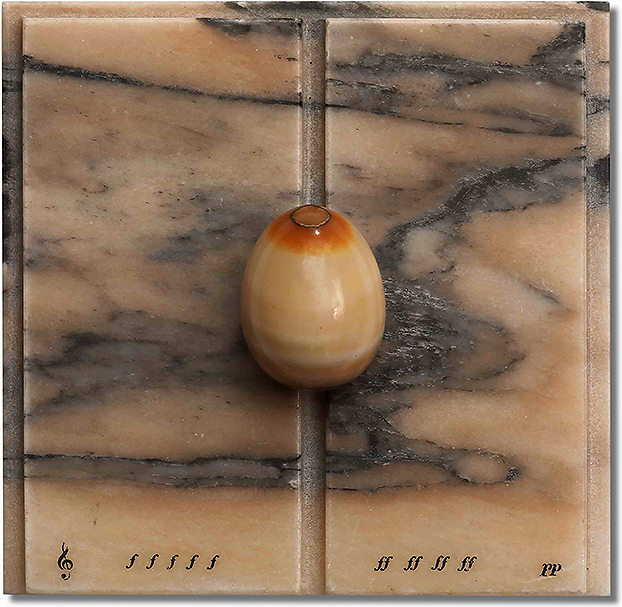I met Mirella Bentivoglio in 2007, while organizing an exhibition on Shu Takahashi. She called me because she owned a work of the Japanese artist and wanted to sell it, so I went to see it. The thing that struck me most was her extreme vitality. She quickly showed me Takahashi’s work and then started talking about her work. From then on, we started a friendship that greatly influenced my way of seeing art and not only art.

Mirella Bentivoglio was born in Klagenfurt in 1922 to Italian parents. From the earliest youth she wrote poetry books both in Italian and English. She later felt the calling for the joint use of verbal language and image, linking herself to the international neo-avant-garde of the second half of the Twentieth century. Her research focuses on the playful or disturbing relationship between language and image that she elaborates in the form of “object poetry”, installations and performances with the use of recurrent symbols such as the egg, the book, the tree.
The book-object is one of the central themes of her artistic and critical production. Her wide culture and depth of vision allow her to direct the developments of the experiments on the subject matter, also intervening to support the work of other artists. In fact, Mirella Bentivoglio soon became the reference point for a large group of artists, but above all female artists, operating in Italy and abroad from the 1960s.
In 1978 she curated the Materialization of Language exhibition for the Venice Biennale, where she exhibited works by 80 Italian and foreign artists, whose research focused on the relationship between language and image. After decades this review remains a unicum that gives us an overview of the state of female art in the 1970s, certainly on the edgeof the establishment and the market, but precisely for this reason capable of expressing total freedom and authentic experimentation.

As Bentivoglio explains in the exhibition catalog, “women’s poetry often tends to specularity, circularity, complementarity, to a subtle or violent primarization. And if it is true that in its final result the poetic expression, either of a man or a woman, is always total, hermaphrodite, it is also true that the grouping of many works from disparate times and places highlights certain constants of choices and of proceedings.”

In 2022, again with Gramma_Epsilon Gallery, we presented Metamorphosis, a monothematic project dedicated to her at Artissima in Turin, as part of the Back to the Future section.




When Mirella arrives at the Cortese & Lisanti gallery, along with this enormous wealth of experience, a fruitful collaboration begins, giving new and unexpected direction to my work. Between 2007 and 2011 Mirella Bentivoglio participated in numerous gallery exhibitions, both as curator and as an artist, bringing prominent names such as Franca Sonnino, Elisabetta Gut, Tomaso Binga, Renata Prunas, Emilio Villa, Gisella Meo, Anna Torelli, Chima Sunada, Giustina Prestento and Chiara Diamantini.
After her death in Rome in 2017, I reaffirmed my commitment to the promotion of her work.
As a result, in 2021 I curated with Davide Mariani a major retrospective exhibition entitled Mirella Bentivoglio_L’altra faccia della luna at Stazione dell’Arte in Ulassai (NU) and the following year, on the centenary of her birth, in Athens at the Italian Cultural Institute and Gramma_Epsilon Gallery.
